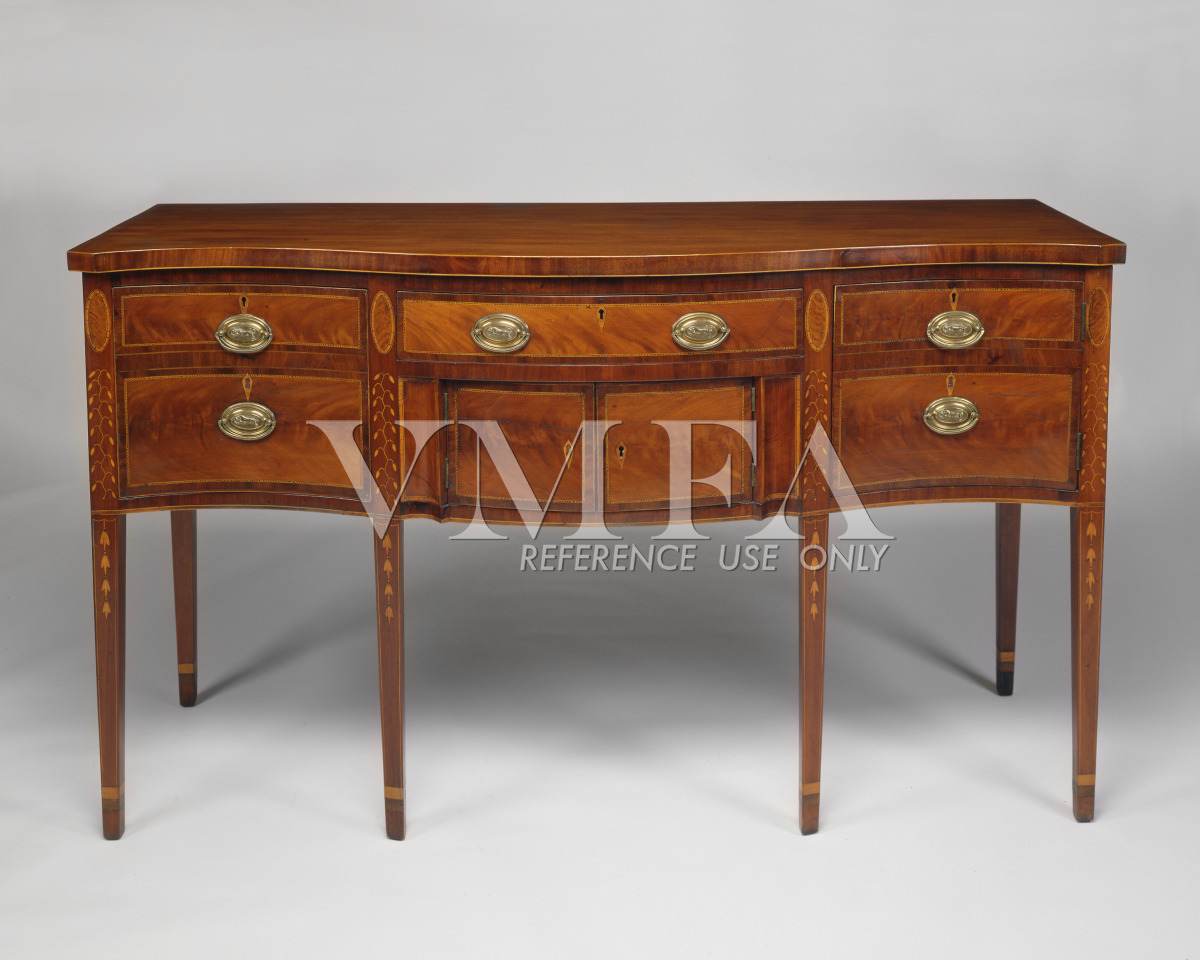
Sideboard (Primary Title)
Unknown (Artist)
The restrained elegance of this bowfront sideboard exemplifies the dramatic change in furniture design at the end of the 18th century. Gone are the elaborate cures and deep carvings favored in previous decades. Instead, British and American cabinetmakers – including the maker of this handsome Virginia piece – found inspiration in the more austere neoclassical style popularized by the books of English designers George Hepplewhite and Thomas Sheraton. The new fashion dictated delicate proportions, straight tapering legs, and ornament inlaid with contrasting woods.
As a furniture form, the sideboard was also a recent arrival, though it quickly became the most important piece of furniture in the well-appointed dining room. It could store bottles of liquor, extra plates, glassware, and flatware, but its primary function was to display an owner’s choice pieces of silver, carefully arranged along its top surface.
Some object records are not complete and do not reflect VMFA's full and current knowledge. VMFA makes routine updates as records are reviewed and enhanced.

